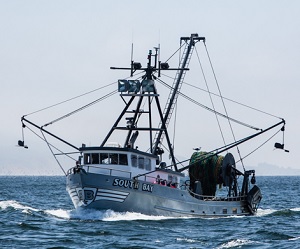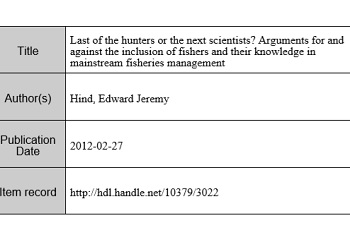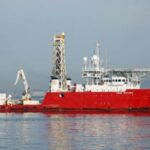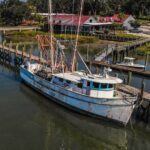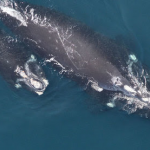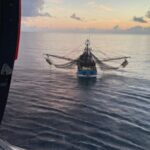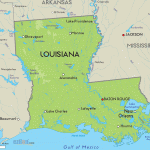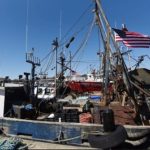Category Archives: Marine Science
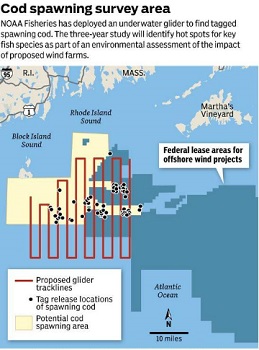
Federal study surveys spawning Atlantic Cod – Research area sits in waters zoned for offshore wind projects.
NOAA, the state Division of Marine Fisheries, Woods Hole Oceanographic Institution and the University of Massachusetts Dartmouth School of Marine Science and Technology are all participating in the study, which is funded by the U.S. Bureau of Ocean Energy Management. The research is focused on what may be one of the last remaining major seasonal spawning gatherings in the Northwest Atlantic, according to the state Division of Marine Fisheries. “It’s certainly been a persistent spawning aggregation and there are not many in New England,” said fisheries scientist Steve Cadrin, principal investigator on the project for the School of Marine Science and Technology. Atlantic cod populations are at historic lows, hammered by chronic overfishing and climate change. >click to read< 07:06
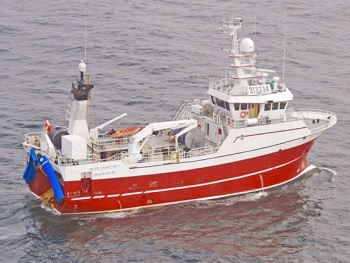
Glum outlook scares salmon fishing industry – Wednesday, an expedition leaves for the Gulf of Alaska to try to help crack the puzzle
This year’s preliminary salmon outlook from Fisheries and Oceans Canada says overall expectations for salmon returns are generally low and similar to those in 2019. In many cases, expectations have even declined, it said, noting that the picture is brighter in “very few cases.”,, On Wednesday, a B.C.-based expedition leaves Victoria for the Gulf of Alaska to try to help crack the puzzle of plummeting stocks. Scientists from Canada, Russia and the U.S. will be on the chartered 37-metre commercial trawler Pacific Legacy No. 1. It returns April 4. more, >click to read< 10:00
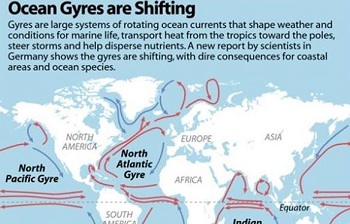
New study shows ocean currents are shifting toward the poles
In the past 40 years, eight of the world’s major ocean gyres (wind-driven current systems) have been slowly shifting toward the poles at a rate of about a mile every two years. Up to now, available observations have been sparse and short in duration, making it difficult to track any dynamic changes of large‐scale ocean circulation. This is what experts at the Alfred Wegener Institute, Helmholtz Centre for Polar and Marine Research (AWI), analyzing long-term global satellite data of ocean surface temperature and sea levels found. >click to read<10:49

Meet the super-plant from Nova Scotia’s shorelines: eelgrass
Eelgrass protects shorelines against storms, cycles nutrients and provides juvenile fish and lobster with places to hide and grow. If that’s not enough to convince people that eelgrass is a super plant, it is also many times more efficient at capturing and storing carbon than terrestrial forests.,,”If you lose eelgrass there’s nothing to replace it,” says Heike Lotze, a researcher and professor at Dalhousie University,, While protections for eelgrass can be put in place, Lotze points to a lack of understanding and recognition that what happens on land directly affects the ocean. Eelgrass is extremely sensitive to runoff (water carrying sediments and or chemicals) from land due to human activities such as development and agriculture (wastewater treatment plants). >click to read< 17:56

International Scientific Expedition to probe Pacific salmon survival
“While we recognize that ocean and climate conditions are major factors regulating salmon abundances, the mechanisms regulating abundances in the ocean are not known,” B.C. scientists Richard Beamish and Brian Riddell,, Scientists are seeking to provide more accurate forecasts of salmon returns during what Beamish and Riddell say might be the most difficult time in recent history for stewardship of Pacific salmon.,, The survey takes place as B.C. fishermen fear disastrous returns this year following poor returns for much of the coast last year. >click to read< 18:56
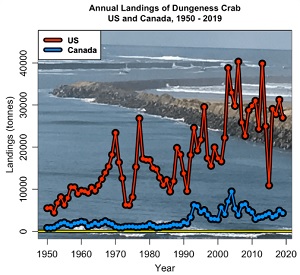
Dungeness Crabs Redux
Well, after my last post, The Solution To Dissolution, I thought I was done with the Dungeness crab question. And I was happy to be done with those chilly crustaceans. Writing that post brought back memories of how cold the fishery is. I remember leaving out from Eureka harbor at the north end of California and crossing the bar at the mouth of Humboldt Bay well before dawn.,, In that post, I discussed the manifold problems with the incorrect media claim that “The Pacific Ocean is becoming so acidic it is starting to dissolve the shells of a key species of crab, according to a new US study.” Willis Eschenbach >click to read< 13:59

Ventless trap survey seeks industry participants
The Maine Department of Marine Resources, in cooperation with the Gulf of Maine Lobster Foundation, is seeking industry participants for the Regional Ventless Trap Program through a competitive bid process. The cooperative research project between industry and scientists from Maine to New York seeks data on relative lobster abundance and size distribution. All traps, line and buoys will be supplied to participating fishermen, >click to read< 10:14
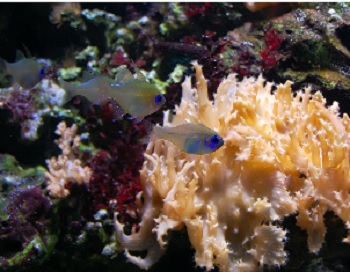
Fishy Findings: 100% Replication Failures
Science proves… Science says… Research shows… Every week, the above phrases are employed by TV personalities, newspaper journalists, coworkers, friends, and family. When these phrases are uttered, certain ideas get elevated above the fray, enthroned on a pedestal. Science has spoken. Who are you to be arguing with SCIENCE?,,, The fallibility of ‘science’ is splendidly illustrated by a paper published last week in Nature. >click to read< 08:23
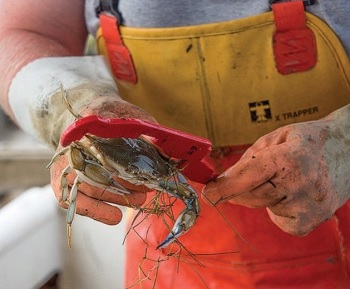
Chesapeake Bay: Targeting male blue crabs for harvest is preventing female crabs from having offspring
The Bay’s crab fishery is currently regulated to limit the harvest of female crabs, in a so-far successful effort to ensure that enough survive to reproduce and maintain the crustacean’s overall abundance — and sustain the estuary’s most valuable fishery. But researchers have wondered — and even worried at times — if harvesting more male crabs (or jimmies, as watermen call them) than females could be having an impact on the population. >click to read< 17:27

Skipper Michael Joyce says fish littering the shore indicates stocks higher than expected
A Lark Harbour fisherman says it’s frustrating to see thousands of mackerel wash up dead on local shores, while fishermen were not permitted to catch any of the fish last season.,,, Andrew Smith, a stock assessment biologist for Atlantic mackerel with DFO, says the input of harvesters is an important part of studying fish stocks, but he said the scientific data doesn’t support the idea that stocks are higher than estimated. >click to read< 10:29
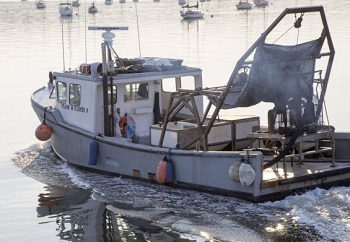
Long Island: Study to assess whether shellfish dredging affects Oyster Bay Harbor
Researchers from Stony Brook University plan to study how mechanical shellfish harvesting kicks up sediment in Oyster Bay Harbor over the coming year. How the sediment affects the environment under the waves is a hotly contested issue that could impact negotiations for a new lease on the town’s shellfish beds. Baymen, independent shell fishermen, allege that shellfishing company Frank M. Flower & Sons Inc.’s methods are damaging the environment. The company’s lawyer said he expects the study to show their methods are safe. >Click to read< 16:25

Rising costs drain contingency fund for Canada’s new fisheries science ships
According to a memorandum prepared for Jonathan Wilkinson, the former minister of fisheries and oceans, the project had already used $19 million in contingency funds by May 2019. But more was needed, the memo said, to cover “escalating project costs such as labour rates and owner’s changes, as well as other unexpected increases to project costs including transition into service costs.” “Access to the remainder of the contingency funding [redacted] is now required,” the two-page memo said. >click to read< 10:21
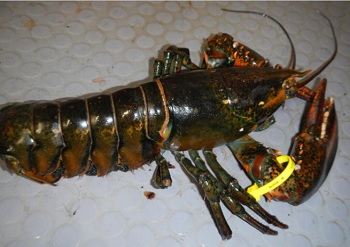
U.S. researcher teams up with Canadian fishermen for tagging project – Tracking the mysterious underwater migration of female lobsters
Heather Koopman, senior scientist at the Grand Manan Whale and Seabird Research Station, has enlisted the help of Grand Manan fishermen to tag any female lobsters they catch and to report when they recapture one that’s been tagged. “Some … have gone nine or 10 nautical miles in the space of a little over a week,” said Koopman. “That’s kind of a distance for an animal … that size.” More than 200 lobsters had been tagged for the project by Tuesday. Koopman said the project hopes to reach the 1,000 mark in the next few weeks. >click to read< 07:39
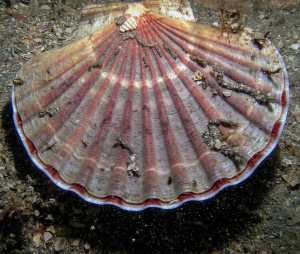
Scientific study finds Seismic testing significantly increases mortality in scallops.
A recently published study in the U.S. Scientific Journal Proceedings of the National Academy of Sciences, found that seismic air gun testing led to a significant increase in mortality among scallops along the Australian coast. No studies have been completed, [or even began] in the U.S. due to lack of funding by the U.S. Commerce Department controlled National Marine Fishery Service. >click to read< 19:57

F/V Darana R Hosts NOAA Fisheries Scientists During Fall Survey
A dozen scientists and staff members from the Northeast Fisheries Science Center visited the 90-foot F/V Darana R in Point Judith, Rhode Island on October 3. The stop was a port call in the midst of the fall NorthEast Area Monitoring and Assessment Program (NEAMAP) survey off the coast of Rhode Island.,, Captain Jimmy Ruhle, son Bobby Ruhle, and crew member Rigo Rodriguez deploy and retrieve all fishing gear, and work with six survey staff from VIMS. The survey collects data including catch, effort, and environmental conditions. Photo’s, >click to read< 18:50

Alexandra Morton: Mark, set, go—reversing the salmon extinction trend
As a scientist and a grandmother, I want to make sure we don’t give up on wild salmon. This year, 2019, is the worst salmon return in the history of this country and the silence is terrifying. It feels like everyone is giving up. Salmon are masters at the art of thriving. They are so good at it all we need to do is listen to them and here is how. Politics aside, the pattern of the 2019 collapse is so clear Siri could navigate it. The Fraser sockeye, which swim through Atlantic salmon pathogens twice in their life history, crashed to 10 percent of what was forecast, while the Nass,,, >click to read< 09:24
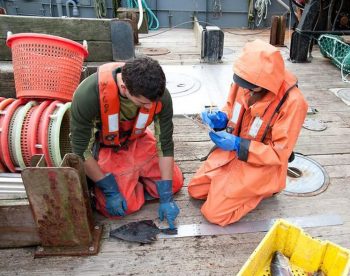
NOAA Wants More Cameras On Fishing Vessels And Fewer Biologists
John Hankins owns the boat “Courageous,” which he sails out of Warrenton on the northern Oregon coast. He had a smile after returning from 25 days fishing for albacore. “I’m full,” he said. “Both tanks!” The National Oceanic and Atmospheric Administration didn’t assign a fisheries observer to his boat this trip. But he said, it happens fairly regularly. “They’re usually not a problem for us,,, >click to read< 09:20
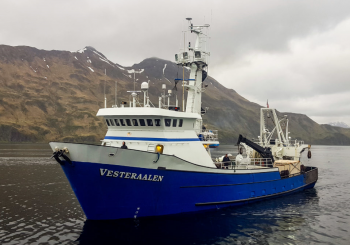
Trawl Survey Results Show Northern Bering Sea In Flux
Norton Sound Red King Crab are moving, Arctic cod numbers have dropped significantly, and Pacific cod are continuing to increase as the Northern Bering Sea ecosystem undergoes drastic change. That’s all according to preliminary results from NOAA Fisheries’ trawl survey this summer in the Northern Bering Sea (NBS). Audio, >click to read< 09:50
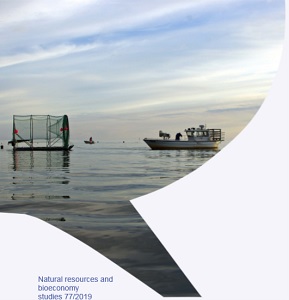
The impacts of seals and cormorants experienced by Baltic Sea commercial fishers
The growth of seal and cormorant populations has challenged the viability of coastal fisheries in the Baltic Sea. In 2017 widely spread frustration among local and regional fishery stakeholders generated a transnational cooperation project operated by the Fisheries Local Action Groups. The Baltic Sea Seal and Cormorant project aimed at producing new knowledge of the seal and cormorant induced problems, and at raising public awareness about the troubled situation in the Baltic Sea area. >click to read the study< 14:02

International expedition answers troubling questions about B.C. salmon runs
Buried in the doom-and-gloom headlines about depleted salmon stocks and disastrous spawning returns is this nugget of truth: There are more salmon in the Pacific Ocean than at any time since 1925.,,, The Russian research vessel Kaganovsky set out on a five-week grid-search test fishery in the North Pacific last February with a team of 21 scientists from Canada, Russia, the United States, Korea and Japan. They examined specific questions about the range, feeding habits and condition of adult salmon, and at least some of the answers are trickling in. >click to read< 15:51
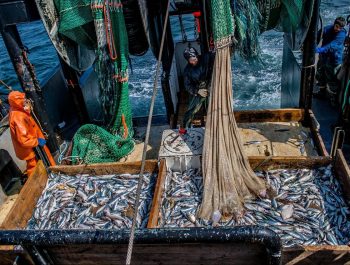
You Can Learn A Lot by Towing Two Nets at Once
Scientists and fishermen boarded the F/V Karen Elizabeth on September 12 with a joint mission: conduct a study of the NOAA Ship Henry Bigelow’s trawl net used for the twice-yearly scientific survey of the Northeast shelf. The Karen Elizabeth can tow two nets at once, making it the perfect platform for examining net performance under different conditions. The study is focused on how the net performs at different spreads, and what differences in catch can be attributed to that spread. Photos, >click to read< 17:15
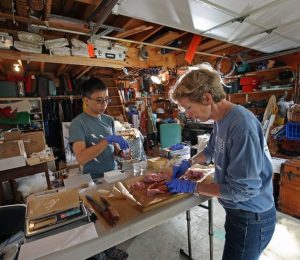
In her garage lab, a scientist looks for answers about skinny tuna
Molly Lutcavage is standing on the State Fish Pier in Gloucester, watching a crane hoist a giant bluefin tuna off the back of a fishing boat. “Look at how skinny she is,” the fisherman, Corky Decker, yells up to her. “That’s how they’ve all been — long, ugly things like you’d catch in June.” Lutcavage nods at the fish, which is 74 inches long but weighs just 174 pounds — very skinny indeed for a tuna — then looks down at the plastic bag in her hands, which is what she’s come for. It contains the tuna’s ovaries,,, >click to read< 07:38
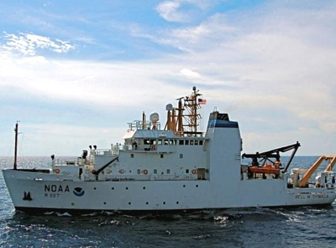
Oregon researchers investigate latest marine heatwave that could hurt Pacific ecosystems
Earlier this month, the feds announced there was trouble brewing in the Pacific: a mass of warm water was building off the west coast, reminiscent of another event nicknamed “The Blob,” which caused havoc for wildlife and fishermen just a few years ago. Experts caution that the current marine heatwave is still in its infancy and could dissipate today, tomorrow or next week.,,, “This marine heatwave took shape in June, persisted, and has grown in size,” said Chris Harvey, a research biologist at the Northwest Fishery Science Center, >click to read< 17:54
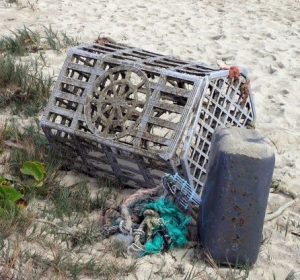
How much fishing gear is lost at sea, worldwide?
The first ever estimate of commercial fishing gear lost in the world’s oceans has been published by CSIRO, Australia’s national science agency. Abandoned, lost or otherwise discarded fishing gear or ‘ghost gear’,,, Until now there has not been a clear global picture of the quantity and type of fishing gear lost worldwide.,,Using data from 68 studies Currently, much of the data on gear loss is from the United States and Europe, highlighting the need for more information about gear losses in the African, Asian, South American and Oceania regions. >click to read< 16:27

New study addresses changes in lobster molt timing, Gulf of Maine temperature shifts
Variation in lobster molt timing has been increasing in recent years, and is related to changing ocean temperatures in the Gulf of Maine,,, Creating a time series for lobster molts and outlining the relationship of the initial intra-annual molt season to bottom water temperatures in the Gulf of Maine is important to the lobster industry because shifts in water temperature could result in changes in timing of the molt season, led by then UMaine graduate student Kevin Staples, who was pursuing a dual master’s degree in marine biology and marine policy. >click to read< 09:45
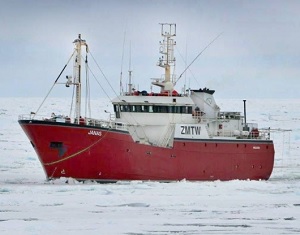
Toothfish research draws scientists, seafarers back for second Antarctic journey
Having broken the ice three years ago, a Nelson-based longliner is making a return voyage to the Antarctic to gain further insights into the world of toothfish. The Talley’s-owned FV Janas sailed last week to the northern Ross Sea region to carry out a winter scientific research survey. This is the second such trip for the Janas, having successfully completed a survey in the Ross Sea in 2016. During that trip, scientists and crew successfully fertilised Antarctic toothfish eggs, measured egg buoyancy of newly fertilised eggs, and collected wild eggs from plankton for the first time in history. >click to read< 14:28






